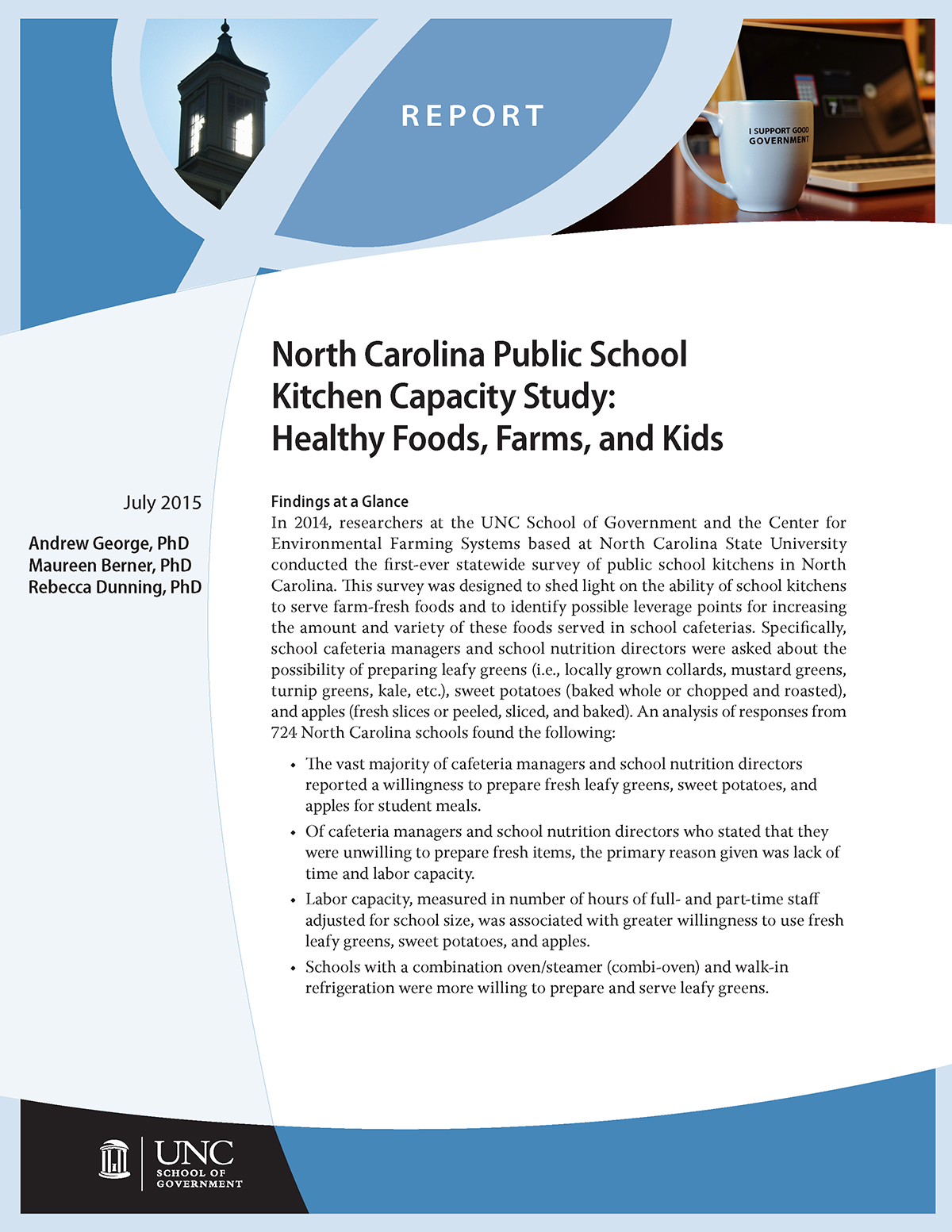North Carolina Public School Kitchen Capacity Study: Healthy Foods, Farms, and Kids
Publication date: July 2015
In 2014, with the assistance of the North Carolina Department of Public Instruction (DPI), researchers at the School of Government at the University of North Carolina at Chapel Hill and the Center for Environmental Farming Systems based at North Carolina State University conducted the first statewide survey of public school kitchens in North Carolina. The survey was designed to shed light on the ability of school kitchens to prepare and serve farm-fresh foods and to identify possible leverage points for increasing the amount and variety of these foods served in school cafeterias. The survey collected data on the types of equipment available for storing and preparing food in individual school kitchens and on their levels of staffing and staff education. Respondents were asked about their kitchen’s equipment inventory and their ability to receive, prepare, and serve three fresh items: apples, sweet potatoes, and leafy greens. These products represent three of the top four farm-to-school products purchased by North Carolina schools. DPI distributed the survey to school cafeteria managers and school nutrition directors in early 2014. A total of 2,400 surveys were distributed, with 724 valid responses received (a 30 percent response rate); 63 of the state’s 115 public school districts were represented.
The vast majority of those surveyed said they would use the specified fresh produce: leafy greens (87 percent), sweet potatoes (94 percent), and apples (97 percent). Researchers compared participants’ willingness to use these fresh foods to the presence of different types of equipment, labor capacity (measured by staff hours), staff education level, and size of school. Two types of equipment were significantly related to preparing and serving leafy greens: a walk-in refrigerator and a combination oven/steamer (combi-oven). Larger schools (those with higher average daily attendance) were more likely to have both of these pieces of equipment, but school size alone did not predict the inclusion of leafy green vegetables on school menus. Labor capacity, measured as the number of available hours of full- and part-time staff adjusted by school size, was a significant predictor of fresh food use: schools with greater labor capacity were more willing to prepare and serve leafy greens, sweet potatoes, and apples. Level of education and years of experience for kitchen management and staff were not related to the use of any of the survey foods.
Qualitative data, in the form of free text responses as to why respondents would not prepare and serve each of the three target produce items, indicated that the primary reason was lack of labor and the time necessary to prepare fresh foods (which accounted for 41 percent of the reasons given). Other issues included restrictions on the use of unprocessed or non-approved items (13 percent), student taste preferences (11 percent), and absence of the foods from the menu plan (9 percent).





